7578409641
»
Vo1. 322 No. 18
TKEATMRNT OF MAI.ADAPTATION TO NICIIT WORK — CZF.1SLF.R ET Al..
1257
Comroi

r«ne at Day (hr)
T««jftrnenl
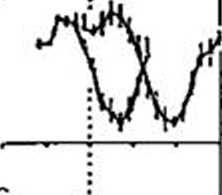
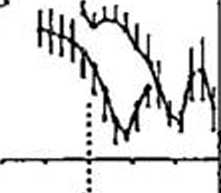
H
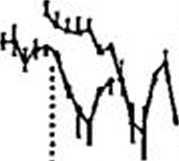
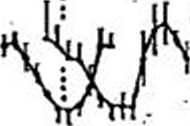
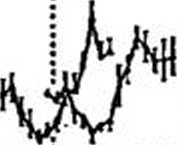
•S 24
1«
Timo of Oay (M

figurę 3. Shifts in Physiologic and BehavioraI Measures doring the First and Sixth Nights ot Work fn the Subjects in me Control
and Treatment Studies.
Eacłi poim shows the mean ±S£M for each variabłe al a given hour during (he initial (open symbols) and lina! (solid symbols) constant routines in the oontroi subjects (lelt-hand paneLs) and the subjects in the treatment group (right-hand panels). Vettica! dashed lines indicate the beginning of me night shifi (mkJnight). Conditions during the control and treatment studies were as de-scribed in figurę 2. The va1ues for cog niUve pedormance are expressed as (he deviat»on from the 24-hour mean.
routinc in the control studies, bul in the treatment studies the averagc curvcs were displaccd to a latęr hour (Fig. 3). The avcragc curves for the finał constant routines of the treatment studies also occurrcd latcr than those of (lic control studies. The magnitudc of the displaccment was consistent witli quantitative cs-timates of the shifc of tlie endogenous circadian phasc as derived from the temperaturę data.
Performance and Alertness Measures during the Night Shift
As sliown in Figurę 3H, lite shift in the endogenous circadian phasc obscrvcd during tlić finał constant routinc in lite treatment studies was associatcd witli siguificantly higlicr normalizcd lcvcls of performance during tlić liours of (lic night shift (midnighl to 08:00) after trcalmciil than hefore treatment (lł = 0.041). In
tlić conlrol studies, ihcre was no significanl difTcrcncc «ti performance during the night-shift liours bctwccn the initial and the finał constant routines (Fig. 3C). Similarly, the mean valucs for alertness wcrc signifi-camly higlicr during the night shift after the hriglit-ligłit inicrvcu(iou in the trcJilincut studies than tlic.y were hcforc treatment (P “ 0.0009) (Fig. 3G). Al-tliough tlić mean valucs for alertness during tlic night shift wcrc also significantly higlicr in the control stud-ics at the timc of (hc finał constant routinc than at the limę of the initial constant routinc (lł = 0.009) (Fig. 3B), (lic improvcmcni was significantly greater in the treatment studies than in the control studies (31.5± 7.8 vs. I3.4±6.3 mm, rcspcctively; P — 0.004).
Discussion
Ocspilc the high prevalcnce of night work in modern society, (hc physiologic response of the circadian timing system to the rcvcrsal it occasions in the slcep-wakc Schedule is poorly understood. This is largely bccaiisc night workers arc exposcd to confiicling syn-chronizing cucs: their work schcdule demands activity at night and slecp during the day, whereas all other periodie environmental cucs (in particular the light-dark cyde) are orienlcd toward activity during the day and slecp at night. Although some laboratory experi-ments have indicated considerable adaptation to a wcek of simulated nighttime work,12 those experi-ments were conducted in laboratories shidded from the environmcntal light-dark cyde (ó which shift workers arc ordinarily cxposed. Studies of shift workers cxposcd to norma! periodie cnvironmental cucs have* suggested that an incomplctc adaptation to nighttime work occurs in persons who live at home and travel daily to work.2-6,0***
In this study, we attempted to resolvc the dilemma by cualuating endogenous circadian rhythms under oontrollcd laboratory conditions on the firsl and sixth night shifts in men otherwise living at home. The physiologic and behavioral data that we collectcd in the control studies dcmonstratc that under field.condi-tions che circadian timing system fails to adapt to an invcrsion of the daily routine even after a wcek of night work. In fact, thrcc of the fivc men had smali maladaptive advances of the endogenous circadian phasc on the sixlh night shift as comparcd witli the first. The failurc of the circadian timing system to adapt to night-shift work in persons working in ordi-nary room light at night and sporadically cxposcd to bright outdoor light during the day is probably a con-scqucncc of the dircct and powerful biologie effect of light on the liuman circadian paccmakcr.74*25
In contrast, in tlić treatment studies we found that four cyclcs of cxposurc to a propcrly designed regimen of bright light and darkness induced a complctc physiologic adaptation to night work in the incn living at home and travcling to and from work. 'Hic physiologic and bchavioral adaptation to the night shift was cvi-dcnl with rcsjicct to all measured uariaMcs. 'Flic suc-ccss of tliis cspcriiuciital paradtgm in iiKlucing au ad-
Wyszukiwarka
Podobne podstrony:
» Vo1. 322 No. 18 TKEATMRNT OF MAI.ADAPTATION TO NICIIT WORK — CZF.1SLF.R ET Al.. 1257 Comroi r«ne a
1255Vol. 322 No. IK TKKATMKNT OK MAI.AOAPTATION TO NICII I* WOKK — O/.KISI.KR ET Al during ihis limc
1255Vol. 322 No. IK TKKATMKNT OK MAI.AOAPTATION TO NICII I* WOKK — O/.KISI.KR ET Al during ihis limc
DSC 18 A. Formation of a cybrid due to fusion of a norma) protoplast B. Protoplasts cąn be mado enuc
S. Jewtuchowicz Fig. 18. Distribution of boulder-clay horizons 1 — no boulder-clay, 2 — one horizon
furby kolorowanka (18) 6. A FUR&Y OF YOU1? OWH Fur by s Iovć to am-q an<i diihęę! Prawyouro
hufig3B aa ne no change Release of bonę lead, ige in bonę lead concentration 3 a %VV - a"
498 Because there is no homogenous definition of risk in Insurance Theory, the first part of the art
mb 10 No. o—Tho blurrinsr of tho hnnds In thia allustration {a duo to tho tremblintr which fscauacd
48082 str (117) 4° ELASTIC DEFORMATIONS i.e., no permanent deformation of the materia] below a certa
mb 10 No. o—Tho blurrinsr of tho hnnds In thia allustration {a duo to tho tremblintr which fscauacd
League oj Nałions —Treały Series. 1 Traduction. —Translation.No. 3205. — TREATY1 OF CONCILIATION,
Low Wear materialsTribological requirements for contacting materials • No seizure (blocking of joint
więcej podobnych podstron